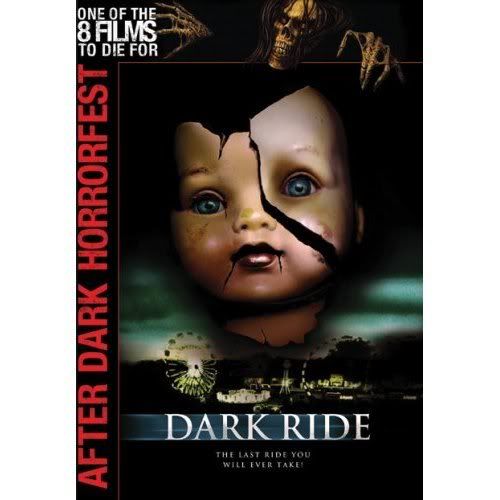I choose Neverending, who gave me...
The following paragraph describes a famous location in the history of horror. Name the location and its connection to the history of horror. Pleas for more information or definition will be met with deaf ears and possible loss of points.
May not be the worst of the many districts in this quarter, but it is undoubtedly bad enough. You may pass on either side about twenty narrow avenues, leading to thousands of closely-packed nests, full to overflowing with dirt, misery and rags. the inhabitants are chiefly dock workers. The other half of the residents are thieves, professional beggars, rag-dealers. The Cimmerian darkness constitutes no small part of its wretchedness, and the brilliant lighting of the public-house gives it much of its attraction. Even the repute of many of these shady localities is due in great measure to their impenetrable gloom after nightfall. They are all enshrouded in that murky obscurity which in the apprehension of adventurers from more favored regions converts them all into possible assassins and thieves. As he catches here and there a glimpse of a face under the flickering, uncertain light of a lamp - the face perhaps of some woman, bloated by drink and distorted by passion - he may get a momentary shuddering sense of what humanity may sink to when life is lived apart from the sweet, health-giving influences.
My Answer: The Horror Significance of Whitechapel
NE's excerpt came from John Hollingshead’s 1861 book Ragged London, a chapter appropriately entitled “The Back of Whitechapel.”
Whitechapel is an inner city district in London which, by the 1840s began to draw a reputation amongst London residents of being particularly impoverished and overcrowded. As Hollingshead decried in his book, it was the classic Dickensian London, filled with poverty, depravity and socioeconomic strife. And out of this vile, wretched womb was born one of the most infamous serial murderers of all time: Jack The Ripper.
For those of you who are not familiar with Dear Ol’ Jack, he filled the Whitechapel Autumn of 1888 with sadistic terror: murdering at least five victims and suspected of slaughtering upwards to eleven. His crimes were heinous; The Ripper targeted prostitutes, mutilating his victims with everything from tearing open the abdomen, to removing the uterus, to severing a body from the throat to the spine, organs emptied and missing. And after this trail of violence, the Killer was never found, leading to urban legends and tales permeating throughout Whitechapel and London culture.
Jack The Ripper alone has had significant influence on the horror genre. The man has been the subject of dozens of fictional and non-fictional pieces of literature, including Robert Bloch’s 1941 “Yours Truly, Jack the Ripper” and follow-up “A Toy for Juliette.” According to Wikipedia, “more than 200 works of non-fiction have been published which deal exclusively with the Jack the Ripper murders, making it one of the most written-about true-crime subjects of the past century.” Alan Moore’s From Hell graphic novel series (1991 – 1998) reimaged the Ripper’s tale, and this story was then adapted to film in 2001 by the Hughes Brothers. The vile act of his crimes (disembowelment, defilement, exsanguination) have been repeated throughout the horror genre, from gore sensationalist Hershel Gordon Lewis to modern directors Wes Craven and Rob Zombie in their studies of human violence and bodily desecration.
But what really connects Whitechapel to the history of horror was the cultural and social upheaval that surrounded those 1888 murders. The Jack The Ripper case was one of the first instances of true criminal profiling. Physicians worked close with police to create a profile of the supposed killer which, of course, was published in the cheap penny papers that circulated the streets. Jack The Ripper’s crimes were the media’s first true foray into the world of sensationalized gore. While there had been murderers prior to 1888, this Autumn in Victorian England marked the revolution of print media that sparked a cultural sensation. His crimes were known as “The Whitechapel Murders,” a title created by the police and spread throughout the districts. Whitechapel was the first city to truly embrace the voyeuristic side of fear, that side that shudders at the crime, but desires to read more about its atrocities. In a sense, this is the birth of the horror audience: A whole city captivated and intrigued by the abominable acts of one of their own.
What also makes the city of Whitechapel so iconic and culpable in these crimes was the advent of The Killer’s Note and the public reaction. Through the killer’s murders, both the police and various newspapers received letters, some of them claiming to be from the Killer himself. Some of them proven to be fakes. Regardless, the entire community, for better or for worse, was involved: Letters were published and greedily read in detail. In conjunction with the publicized criminal profile, the letters created a realistic Evil ready for consumption by the general public. Whitechapel was home of one of the first instances of pure true crime horror lust. And so horror perpetuates. In a city wrought with poverty and strife, stories of Jack The Ripper were, in a sense, escapism from the dull lives of the people. People began to recognize true horror as a macabre form of entertainment. In a sense, the horror audience was born and a precedent was set for the dark reverence of the mysterious serial killer. With this pure media frenzy and public enthusiasm, Jack The Ripper and Whitechapel created a pure legend that would influence the archetype of all future serial killers and the portrayal thereof.
...
It's been a while since I've had to write an essay, critical or otherwise. And I have to say, I was pretty damn proud of this entry.
The judges awarded me with an A, and I tied for first in that round.


